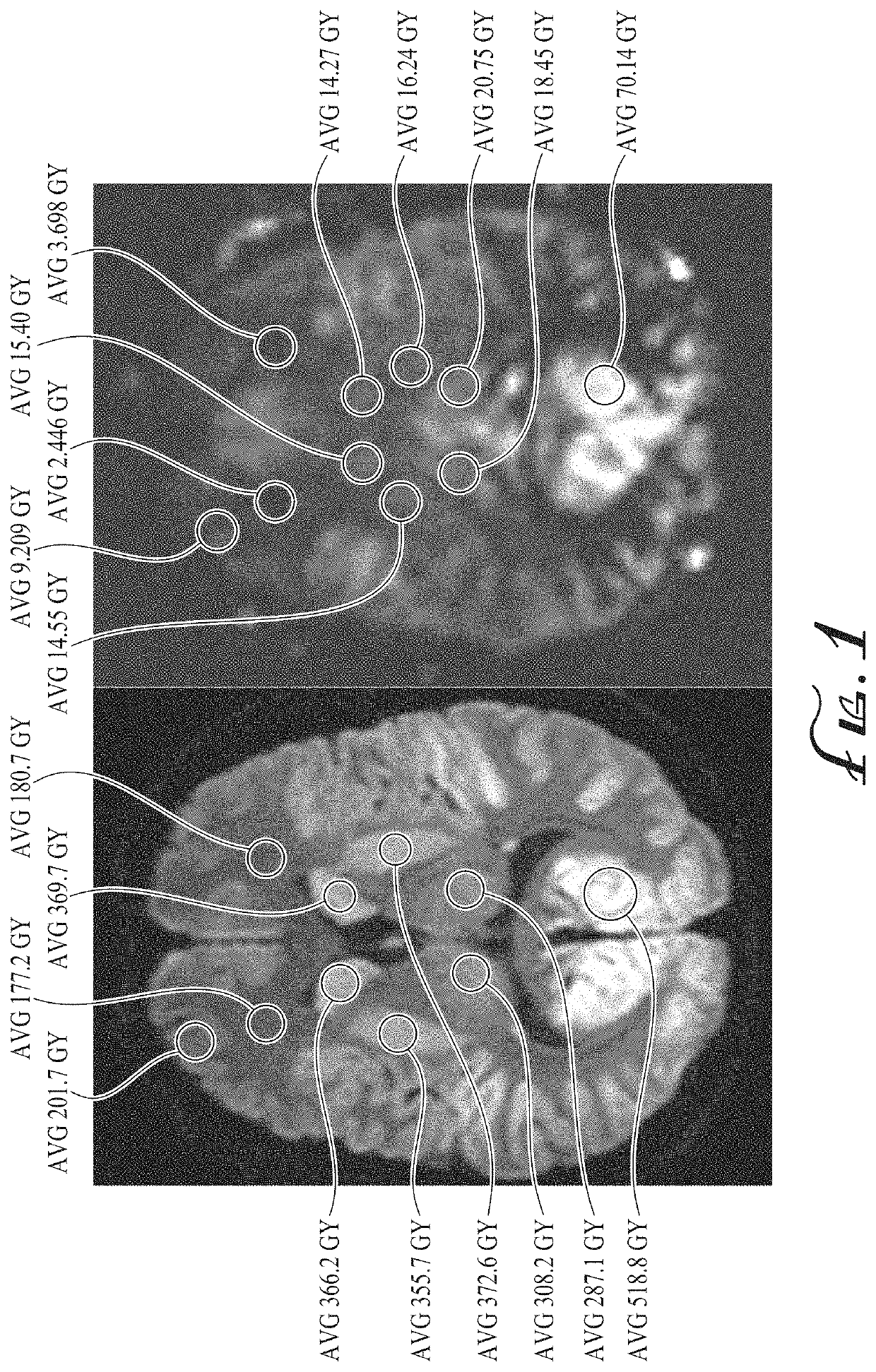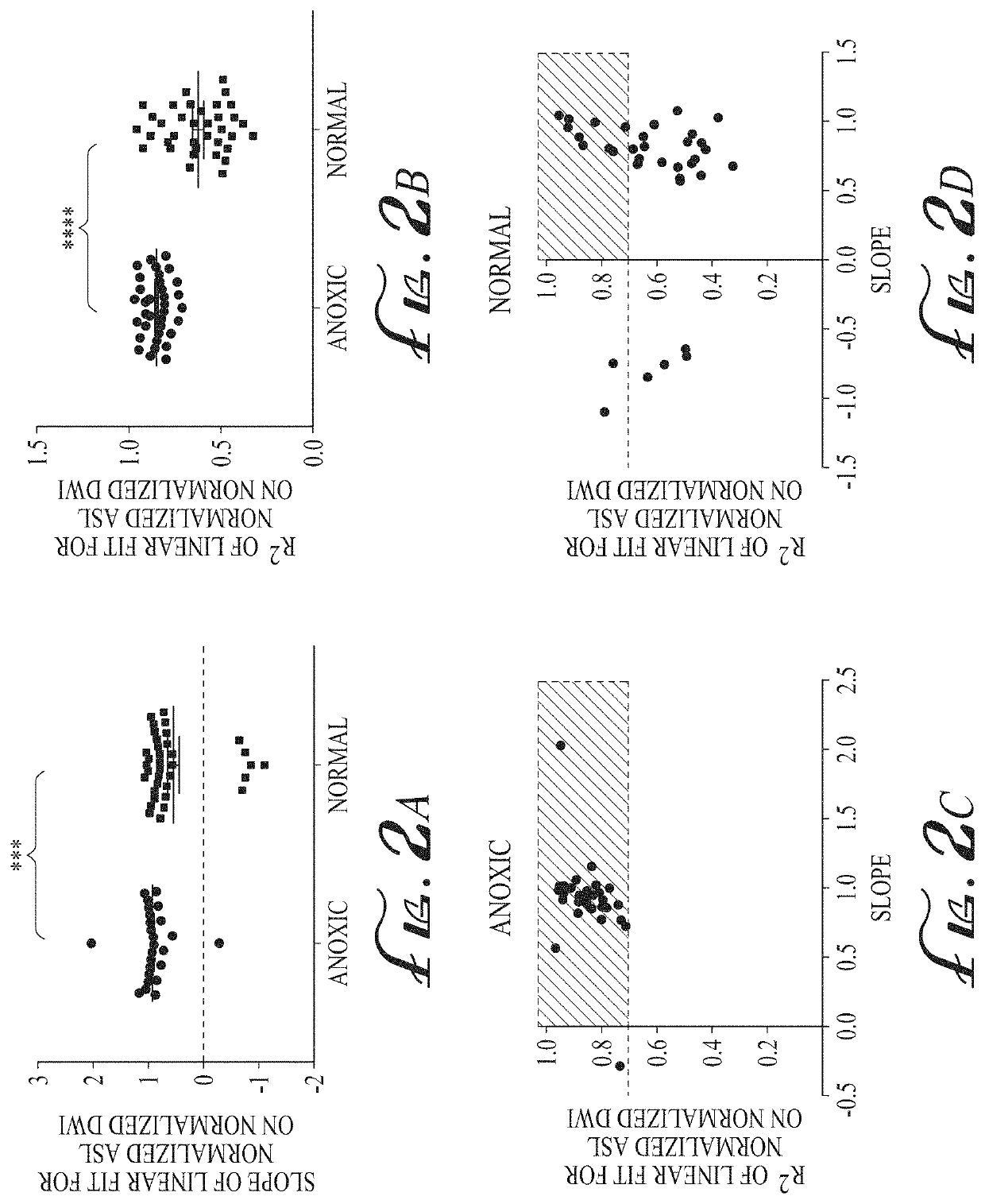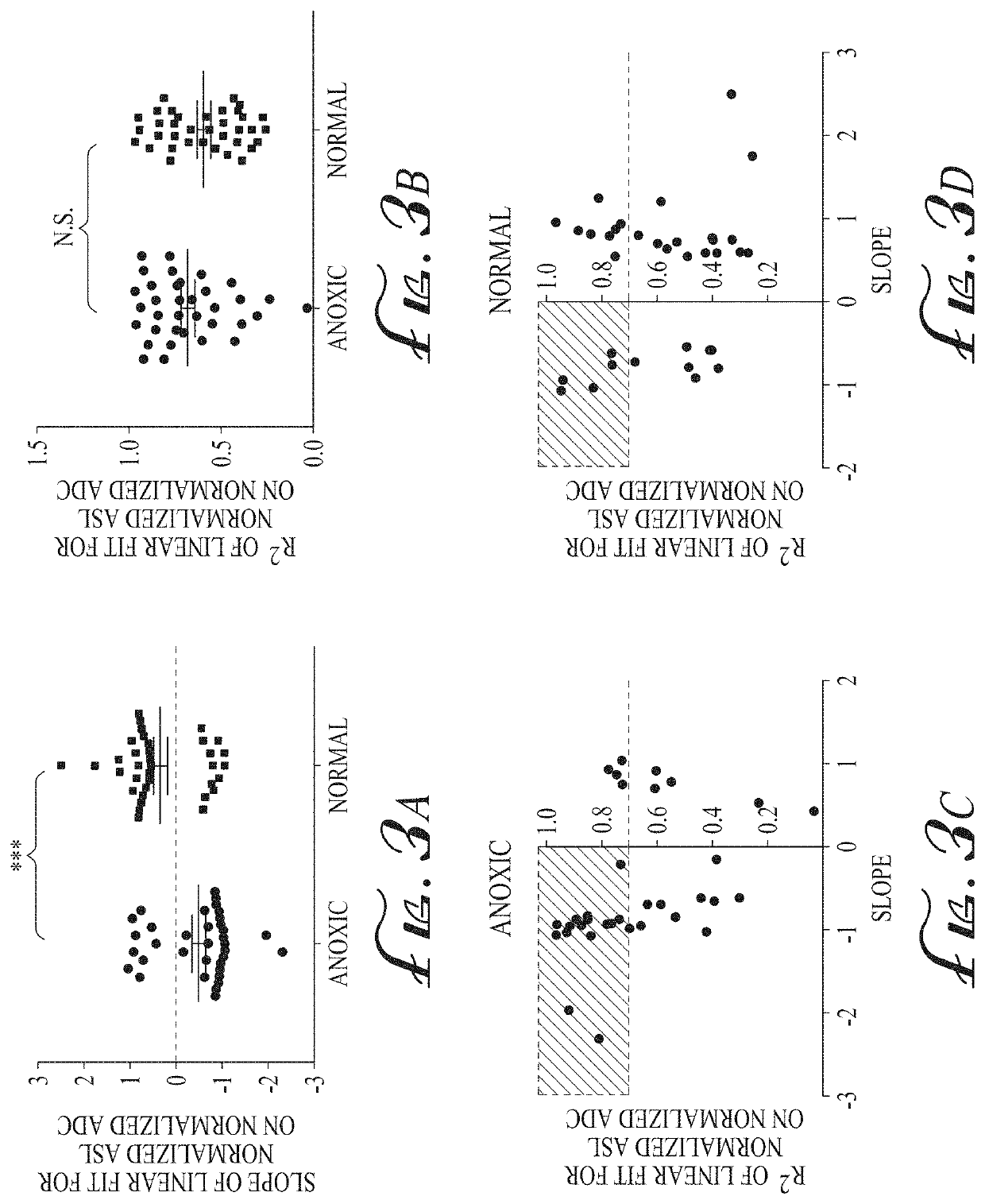Imaging biomarkers based on ratio between diffusion and perfusion
a biomarker and ratio technology, applied in the field of magnetic resonance imaging, can solve the problem that the diffusion findings of the classical diffusion are not as readily apparen
- Summary
- Abstract
- Description
- Claims
- Application Information
AI Technical Summary
Benefits of technology
Problems solved by technology
Method used
Image
Examples
example methodology
[0030]The present inventors retrospectively identified and reviewed medical records for all patients imaged at an institution between 2002 and 2019 whose brain MRI report contained the words “anoxic” or “hypoxic” using an institutional Radiology Search Engine. Anoxic patients were included if their MRI study contained diagnostic ASL perfusion and DWI sequences. Patients were excluded if there was severe motion artifact or the ASL or DWI sequence was otherwise non-diagnostic. Age matched controls imaged with ASL and DWI without a history of anoxic or hypoxic injury were also collected and analyzed. Similar to the anoxic group, control patients were excluded if the ASL or DWI sequence was non-diagnostic. In addition, patients with prior surgeries, intracranial hemorrhage, and ischemic injuries of any age were excluded. Patient age, cause of anoxic injury, and time from anoxic injury to imaging were recorded.
[0031]ASL CBF maps are generated using the single phase pulsed ASL clinical se...
example statistical
Analysis
[0035]ASL perfusion, DWI, and ADC measurements for each ROI are normalized using the ROI signal intensity in the cerebellum or the brain stem, for grey matter and white matter, respectively. A linear best fit was performed between the normalized DWI and the normalized ASL values and the slope recorded, allowing up to 25% outlier identification. Graphs of the best-fitted line slopes and their respective R2 values are generated with a pre-determined R2 cutoff of 0.70. A similar analysis is performed using the normalized ADC measurements.
[0036]The relationship between the estimated time interval from inciting event to imaging and the linear regression slopes as well as R2s is examined to determine the dependence on the timing of imaging. Calculations are also made to determine the dependence on the number of ROI measurements. Two random raw (non-normalized) DWI and ASL ROls are selected for each patient and the slope was calculated using the two points. Combinations of two ROI ...
example experimental
Results
[0045]45 patients with anoxic injuries were initially identified using our institutional Radiology Search Engine from 2002 to 2019 with two-reader confirmation. Nine patients were excluded due to non-diagnostic imaging sequences; one patient was excluded due to remote injury (imaging was obtained 253 days after initial inciting event). The remaining 35 patients with anoxic injuries had imaging ranging from 0 to 14 days after the reported inciting event with mean of 3.8±0.5 days. 36 age-matched patients with a normal MRI had imaging performed between September 2010 and May 2019. Patient characteristics of the anoxic group and the normal group are shown in Table 1.
TABLE 1Patient characteristics of the anoxic injurygroup and the normal control group.AnoxicNormalVariable(n = 35)(n = 36)p valueAge (years)21.1 ± 4.426.5 ± 2.70.03Gender (Female)16 (45.7%)15 (41.7%)0.73Survived13 (37.1%)Interval to imaging (days) 3.8 ± 0.5Received CPR15 (42.9%)CPR time (minutes)22.7 ± 4.3Witnessed Se...
PUM
 Login to View More
Login to View More Abstract
Description
Claims
Application Information
 Login to View More
Login to View More - R&D
- Intellectual Property
- Life Sciences
- Materials
- Tech Scout
- Unparalleled Data Quality
- Higher Quality Content
- 60% Fewer Hallucinations
Browse by: Latest US Patents, China's latest patents, Technical Efficacy Thesaurus, Application Domain, Technology Topic, Popular Technical Reports.
© 2025 PatSnap. All rights reserved.Legal|Privacy policy|Modern Slavery Act Transparency Statement|Sitemap|About US| Contact US: help@patsnap.com



